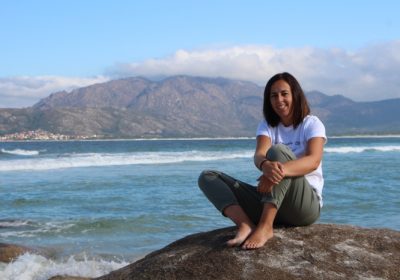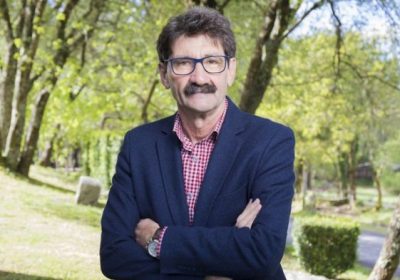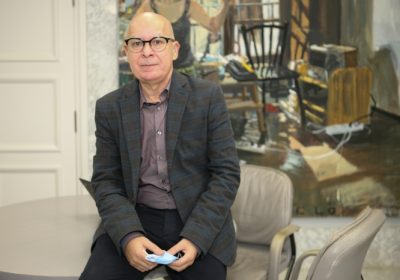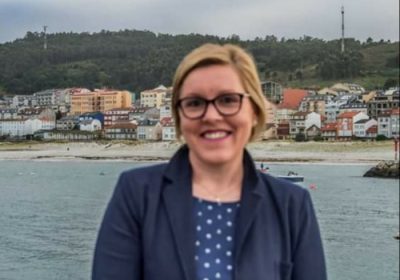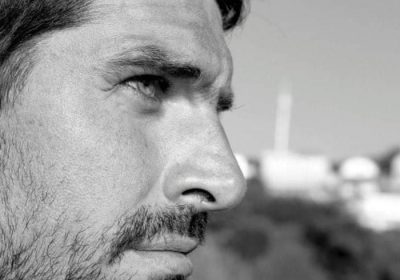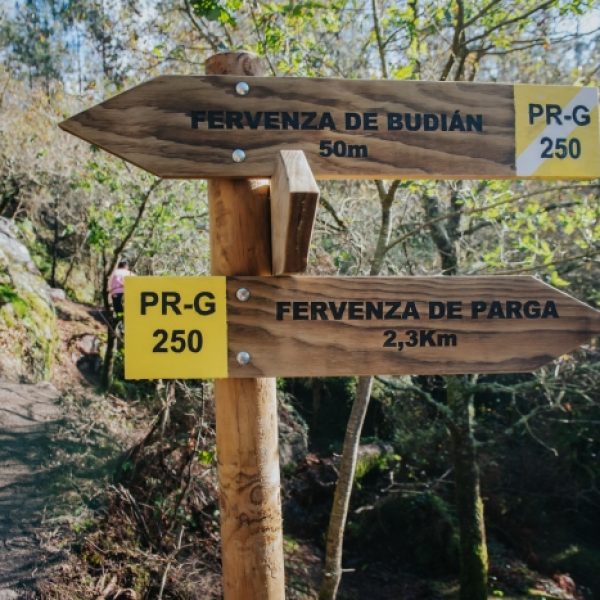The actress from Fisterra, Marta Lado, has been named Costa da Morte Ambassador 2026, a recognition that honors people who help promote the identity, culture, and values of this region beyond its borders. Known for her leading role in Sicixia —a film shot in the Costa da Morte and directed by Ignacio Vilar—, Marta is one of the most recognized voices in Galician cinema, as well as a creator deeply committed to culture and environmental awareness.
Her connection with the Costa da Morte goes beyond her birthplace: it is part of her artistic and personal identity. Now, with the title of Ambassador 2026, she becomes the voice that will represent the essence and spirit of a land she herself describes as “a place that captivates and moves you.”
Interview with Marta Lado
I. Her work and artistic career
- Marta, first of all, congratulations on this appointment. What does it mean to you to be named Costa da Morte Ambassador 2026?
Thank you so much! Honestly, my first feeling was a bit of shyness. I know I should be used to public exposure because of my work, but I’m usually behind a character, a mask, playing. Personally, I’m quite shy. Beyond that, it’s an overwhelming honor to be recognized by my own community and to be considered among people I admire as much as the previous ambassadors. - Throughout your career, you’ve taken part in very diverse projects, but Sicixia was a special milestone. How do you remember that experience of filming in the Costa da Morte and playing a character so connected to your roots?
I remember it as an expedition! I traveled to places I had never been to, acted as a local guide in others… I was deeply involved in the creative process of the film and the character. I felt that I knew “Olalla” very well; I was comfortable improvising and reacting as she would. At the same time, I felt a great sense of responsibility sharing scenes with real people, since the filming style was close to documentary and required a very natural performance. It was incredibly enriching as an actress — I learned a lot. - That performance earned you the Best Actress Award at the Cinespaña Festival in Toulouse. Do you think Sicixia helped showcase the cultural and emotional strength of the Costa da Morte in Galician cinema?
I couldn’t go to Toulouse to collect the award, but at the Paris premiere everyone was asking me about the land, the landscape… they saw it as a paradise, asking what it was like to live there, promising to visit… I think it was an important moment that brought new perspectives. - Besides being an actress, you are also involved in educational and cultural projects. What role do you think art —especially theatre and film— plays in education and in transmitting the values of a region?
Theatre, above all, has the power to build community. In class, we have the chance to express our experiences, give them value, and share them with others who feel the same. One of the things I’m most proud of is seeing how my students now perceive our work differently — no longer as everyday anecdotes, but as part of our history, what makes us who we are. There was a special moment during the final rehearsal of Mamoria: two elderly women came in. The play depicted scenes from Fisterra’s recent past — washing clothes by the river, attending wakes… They were moved and said, “That’s exactly how it was!” It was wonderful to see that they felt their story was valued, worthy of being on stage. - You were also the face of the 2018 Mostra do Encaixe de Camariñas campaign, another project deeply linked to Costa da Morte’s identity. What did that experience mean to you?
I’d say it was “a joy.” Although I’m not deeply involved in fashion, I see it as a powerful art form — complex yet universally communicative. Lacework is one of the most beautiful treasures of our region, and collaborating with great designers seems the perfect way to preserve and share it. My aunt used to ask, “When are you getting married?” and I’d say, “When you make me a lace dress!” And, well, I almost made that happen. - What advice would you give to young people who dream of working in acting or the performing arts from a small, peripheral place like ours?
Nowadays there are far more opportunities for communication, collaboration, and learning… but it’s still not easy. You have to move, explore, and find the best training you can. You’ll never be freer to travel and take risks than when you’re young. Then come back, bring your experience, and help everyone grow.
II. The Costa da Morte and the feeling of belonging
- You were born in Fisterra, a place symbolic of both endings and beginnings. How does that origin influence your way of seeing the world and creating?
I’m not really conscious of how it influences me — ideas just appear and I follow them. Later, I realize that certain themes attract me more. Death, for example, is one of them, and that might have to do with our mythology or the idea of “the end.” But at the same time, I see Fisterra as connected to the land by a narrow tongue but open to the entire world through the sea. It’s a place of arrival, eclectic and unpredictable. I always felt that any sort of colorful character could appear when you least expect it — and that’s a wonderful spark for creativity. - The CMAT highlighted your commitment to sustainability and respect for the land. What does sustainable tourism mean to you in the context of the Costa da Morte?
For something to be sustainable, it must be authentic. If we let ourselves be driven by trends or global fashions, we’ll lose our identity. We don’t have warm-water beaches or endless sun, and it’s pointless to seek that here for one month a year and complain when it’s not found. What we do have are forests, landscapes, storms, stone houses, monuments, gastronomy, craftsmanship, art, and history. I believe it’s much wiser to protect and promote what we already have year-round rather than chase fleeting trends. - When you talk about the Costa da Morte, you do so with deep emotion. If you had to describe it with one word or image, what would it be?
There’s a painting — The Wanderer Above the Sea of Fog — considered the epitome of the sublime. It evokes the same feeling I get at Rostro Beach in winter or atop Monte Pindo. But “sublime” feels too ethereal; I’d choose “fierce.” - What do you think makes the Costa da Morte unique compared to other places in Galicia or the world?
Mainly its people — their character, humor, creativity, and artistic talent. And of course, its nature: wild yet welcoming, a place you can walk through and truly feel part of. And let’s not forget — the seafood! - How do you see the future of this region? What challenges and opportunities do you think lie ahead?
We have great natural and human resources, but also big challenges ahead to prevent young people from leaving: restoring and improving healthcare and education, creating quality jobs, demanding better connections… We must build a healthy society and avoid repeating the mistakes of the past made out of greed or ignorance. - Finally, as Costa da Morte Ambassador 2026, what message would you like to send to those who visit us and to those who live here?
That we respect one another — and our land. That we learn to connect through curiosity and empathy, not suspicion. It might sound naive, but I think we live in a time when we must remember that life is too short to live it in conflict. As my dear grandfather used to say: “Is there anything more beautiful than loving one another?”
Photos: Nerea Díaz





